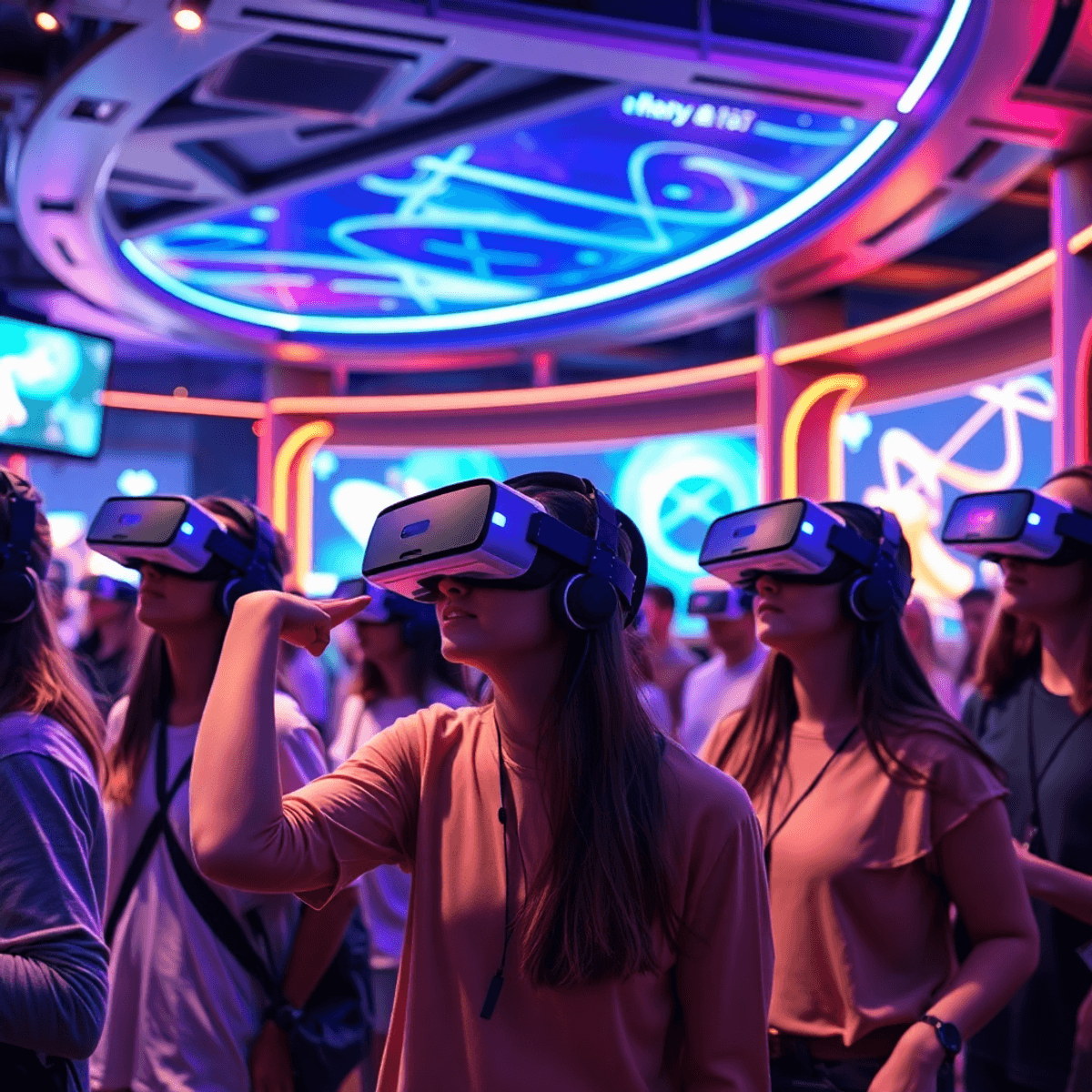
HTC Corporation, known for its VIVE VR products, and NTT Communications Corporation, a key player in ICT solutions, have recently signed a Memorandum of Understanding (MOU) to elevate location-based entertainment (LBE) experiences across Japan. This collaboration marks a significant step in the realm of immersive XR deployments within physical venues.
Location-based entertainment (LBE) refers to immersive experiences that take place in physical venues where users interact with virtual content through XR technologies. These experiences blend the digital and physical worlds to create engaging environments for users.
XR headsets play a crucial role in LBE by allowing multiple users to simultaneously engage with shared virtual content within a physical space. This enables collaborative experiences where participants can interact with each other and the environment in real-time.
LBE technology offers several advantages:
By leveraging XR headsets and location-based entertainment, venues can provide unique and interactive experiences that captivate audiences and drive engagement.
HTC VIVE’s LBE platform meets NTT Communications Corporation’s deep expertise in ICT solutions, creating a powerful fusion aimed at transforming Japan’s venue landscape. This isn’t just another tech deal — it leverages smart venue infrastructure and networking technology integration to bring immersive XR experiences into spaces already buzzing with energy: sports arenas, concert halls, and event centers.
This partnership aims to turn underutilized real estate into hubs of futuristic entertainment — where cutting-edge XR tech meets the everyday pulse of Japan’s cultural hotspots.
HTC and NTT Com’s partnership leans heavily on cutting-edge tech to push the limits of immersive XR in location-based entertainment. At the heart of this is IOWN (Innovative Optical and Wireless Network), a next-gen infrastructure designed to deliver ultra-high-speed connectivity with minimal latency. For multi-user XR experiences in sprawling venues, this means crisp, synchronized interactions without the lag that kills immersion.
IoT systems are another pillar supporting this ecosystem. By embedding sensors and smart devices throughout physical spaces, these systems enable real-time data exchange between users, environments, and XR content. Imagine a concert where audience movement or environmental changes dynamically influence virtual layers—thanks to IoT, this responsiveness becomes seamless and scalable.
Tactile communication tools take sensory engagement beyond visuals and sound. These interfaces provide users with physical feedback—vibrations, textures, or temperature shifts—that mirror virtual events. This multisensory approach elevates XR events from passive viewing to active bodily participation, crucial for creating memorable LBE moments.
HTC and NTT Sign MOU to Expand LBE Experiences Across Japan with these advanced technologies laying the groundwork for scalable, interactive venues that redefine how we experience shared virtual worlds.
In the world of immersive XR experiences, HTC and NTT Com are getting ready to expand their content offerings through strategic partnerships with important players in Japan’s cultural and entertainment industry. Here’s a look at what they have planned:
The two companies aim to establish partnerships with well-known Japanese intellectual property holders in the gaming and anime industries. By leveraging iconic characters and storylines, they want to enhance their content offerings and attract a wide-ranging audience.
HTC and NTT Com plan to collaborate with local governments and cultural institutions in Japan. This partnership will not only create culturally relevant immersive experiences but also help preserve and celebrate Japan’s rich heritage through advanced XR technologies.
Using HTC’s successful international showcases such as Eternal Notre-Dame, Versailles: The Lost Garden of the Sun King, and La Magie Opéra as a model, the partnership aims to incorporate elements that resonate with global audiences into these cultural XR exhibitions. Their goal is to develop immersive experiences that go beyond borders.
Exciting times lie ahead as HTC and NTT Com explore these collaborations, promising a vibrant tapestry of immersive content that combines innovation with cultural richness.
LBE (Location-Based Entertainment) technology has the potential to revolutionize professional training programs that require interactive virtual environments. Industries such as healthcare, aviation, and manufacturing can benefit from realistic simulations created using XR technology. These immersive training experiences allow professionals to practice their skills in a safe and controlled setting, leading to improved performance in real-world scenarios.
Performing arts institutions have an opportunity to leverage XR technology to create innovative performances that are accessible to wider audiences. By incorporating virtual reality or augmented reality elements into their productions, theaters and dance companies can transport viewers to different locations or enhance storytelling through digital effects. This not only attracts tech-savvy audiences but also opens up new revenue streams through ticket sales for virtual performances.
Japan’s tourism industry can benefit from immersive recreations of famous landmarks or cultural heritage sites using VR technology. Visitors who may not be able to physically travel can experience these attractions virtually, providing them with a taste of Japanese culture and history. Additionally, LBE venues such as museums or theme parks can incorporate multi-user interaction environments up to 1,000 square meters, allowing groups of friends or families to enjoy immersive experiences together.
Here are some key factors that could shape the future of Japan’s immersive entertainment industry:

